How to Prepare and Use Garden Mulch
Welcome to the wonderful world of garden mulch! If you’ve ever wandered through a lush garden and wondered how everything looks so vibrant, you might be surprised to learn that mulch plays a starring role in that beauty. But what exactly is mulch, and why should you care? Well, think of mulch as the cozy blanket for your garden. It helps keep the soil warm, retains moisture, suppresses those pesky weeds, and even adds nutrients back into the earth as it breaks down. In this guide, we’ll dive deep into the various types of mulch, how to prepare and apply it effectively, and tips to keep your garden thriving all season long.
Before we get into the nitty-gritty, let’s take a moment to understand what garden mulch really is. At its core, mulch is any material that you spread on the soil surface to improve the garden's health. It’s not just a pretty face; it’s a hardworking component of your garden ecosystem. Imagine mulch as a multi-tasker in your garden, helping to conserve soil moisture, regulate temperature, suppress weeds, and even enhance the aesthetic appeal of your garden beds. By creating a barrier between the soil and the elements, mulch protects your plants and promotes a healthier environment for them to flourish.
When it comes to choosing mulch, you’re in for a treat! There are two main categories: organic and inorganic. Each type has its own unique characteristics and benefits, making it essential to consider your garden’s specific needs. Organic mulches, like wood chips and straw, are fantastic because they break down over time, enriching your soil with nutrients. On the other hand, inorganic mulches, such as rubber and gravel, offer durability and require less maintenance. Let’s break it down further!
Organic mulches are the superheroes of the gardening world. They not only provide all the benefits mentioned earlier but also improve soil structure as they decompose. Here are a couple of popular organic mulch options:
Wood chips are a fan favorite among gardeners. They’re great for suppressing weeds and retaining moisture in the soil. When applying wood chips, aim for a layer about 2-4 inches thick around your plants. Just be mindful not to pile them directly against plant stems, as this can lead to rot. Plus, they come in various sizes and colors, adding a nice touch to your garden's aesthetics!
If you’re looking for a budget-friendly option, straw and grass clippings are your go-to. They’re easy to find and can be quite effective. However, be cautious with grass clippings; if applied too thickly, they can mat down and create a barrier that prevents water from reaching the soil. A thin layer of about 1-2 inches works best. Just remember, as they decompose, they’ll add valuable nutrients back into your soil.
Now, let’s chat about inorganic mulches. These materials, like rubber and gravel, are perfect for gardeners who want low-maintenance solutions. They don’t break down like organic mulches, which means less work for you in the long run. However, they don’t contribute nutrients to the soil, so they’re best used in areas where you don’t need to enrich the soil, such as pathways or decorative beds.
Now that you’re familiar with the types of mulch, it’s time to prepare for application. Selecting the right mulch is crucial, but it’s equally important to prepare your garden bed properly. Start by testing your soil to understand its pH and nutrient levels. This will help you determine what amendments, if any, you need to make before laying down your mulch. Once your soil is in tip-top shape, you can begin applying your chosen mulch.
Choosing the right mulch involves considering your plants' needs and the specific conditions of your garden. For instance, heavy-duty plants might thrive under wood chips, while delicate flowers may prefer a lighter layer of straw. Always think about the microclimate of your garden and how different mulches can help or hinder your plants' growth.
Before you lay down that beautiful mulch, make sure your soil is well-prepped. Clear away any weeds, rocks, or debris that might interfere with your plants. If needed, consider adding organic matter, like compost, to improve soil structure and nutrient content. A well-prepared bed will help your mulch perform its best!
When it comes to applying mulch, technique matters! You want to ensure that your mulch layer is just right—not too thick and not too thin. A good rule of thumb is to aim for a thickness of about 2-4 inches, depending on the type of mulch and the plants you’re working with. This thickness will help retain moisture without suffocating your plants.
The right layer thickness is vital for your mulch's effectiveness. Too thin, and it won’t suppress weeds or retain moisture; too thick, and it might create a barrier that prevents water from reaching the soil. Always consider the specific needs of your plants and your local climate when determining the appropriate depth.
Mulch isn’t a “set it and forget it” kind of deal. You’ll want to periodically check your mulch layer throughout the growing season. Look for areas that may need replenishing or where the mulch has broken down. Keeping a fresh layer of mulch not only maintains the aesthetic appeal of your garden but also ensures your plants continue to thrive.
Here are some common questions about garden mulch that might help clarify any lingering doubts:
- How often should I replace my mulch? It's good practice to replenish your mulch layer every 6-12 months, depending on the type used and environmental conditions.
- Can I use mulch in vegetable gardens? Absolutely! Mulch helps retain moisture and suppress weeds, making it ideal for vegetable gardens.
- Is it okay to use colored mulch? Yes, but be cautious as some colored mulches may contain dyes that could potentially leach into the soil.

Understanding Garden Mulch
Garden mulch is more than just a decorative layer of material scattered around your plants; it’s a vital component of a healthy garden ecosystem. Think of mulch as a protective blanket for your soil, working tirelessly to create the perfect environment for your plants to thrive. It serves multiple purposes, including conserving soil moisture, suppressing weeds, and even regulating soil temperature. By understanding the various benefits of mulch, you can transform your garden into a lush, vibrant space.
One of the most significant roles of mulch is its ability to retain moisture in the soil. This is especially crucial during hot summer months when plants can easily become stressed due to lack of water. A well-applied layer of mulch can reduce evaporation, keeping the soil consistently moist and reducing the need for frequent watering. Imagine your garden as a sponge; mulch helps to keep that sponge saturated, ensuring your plants have access to the water they need to flourish.
In addition to moisture retention, mulch acts as a formidable barrier against weeds. By blocking sunlight, mulch prevents weed seeds from germinating, which means less competition for nutrients and water for your plants. This is particularly beneficial for new plantings, where establishing roots can be a challenge. With mulch in place, you can think of it as a shield, protecting your young plants from the relentless onslaught of weeds.
Moreover, mulch contributes to soil health by gradually decomposing and enriching the soil with organic matter. This is especially true for organic mulches like wood chips and straw. As they break down, they release essential nutrients back into the soil, promoting a vibrant ecosystem for beneficial microorganisms and earthworms. Essentially, mulch is like a slow-release fertilizer, providing your plants with a steady supply of nutrients over time.
Temperature regulation is another key benefit of mulch. During the summer, it keeps the soil cooler, while in winter, it acts as an insulating layer, protecting plant roots from freezing temperatures. This dual action helps create a stable environment for your plants, allowing them to focus their energy on growth rather than survival. Think of mulch as a cozy winter blanket and a cool summer cap for your garden!
In summary, understanding garden mulch is about recognizing its multifaceted role in enhancing your garden's health and appearance. By conserving moisture, suppressing weeds, regulating temperature, and enriching the soil, mulch is an indispensable ally for any gardener. Whether you're a seasoned pro or just starting out, incorporating mulch into your gardening routine can lead to a more productive and visually appealing garden.
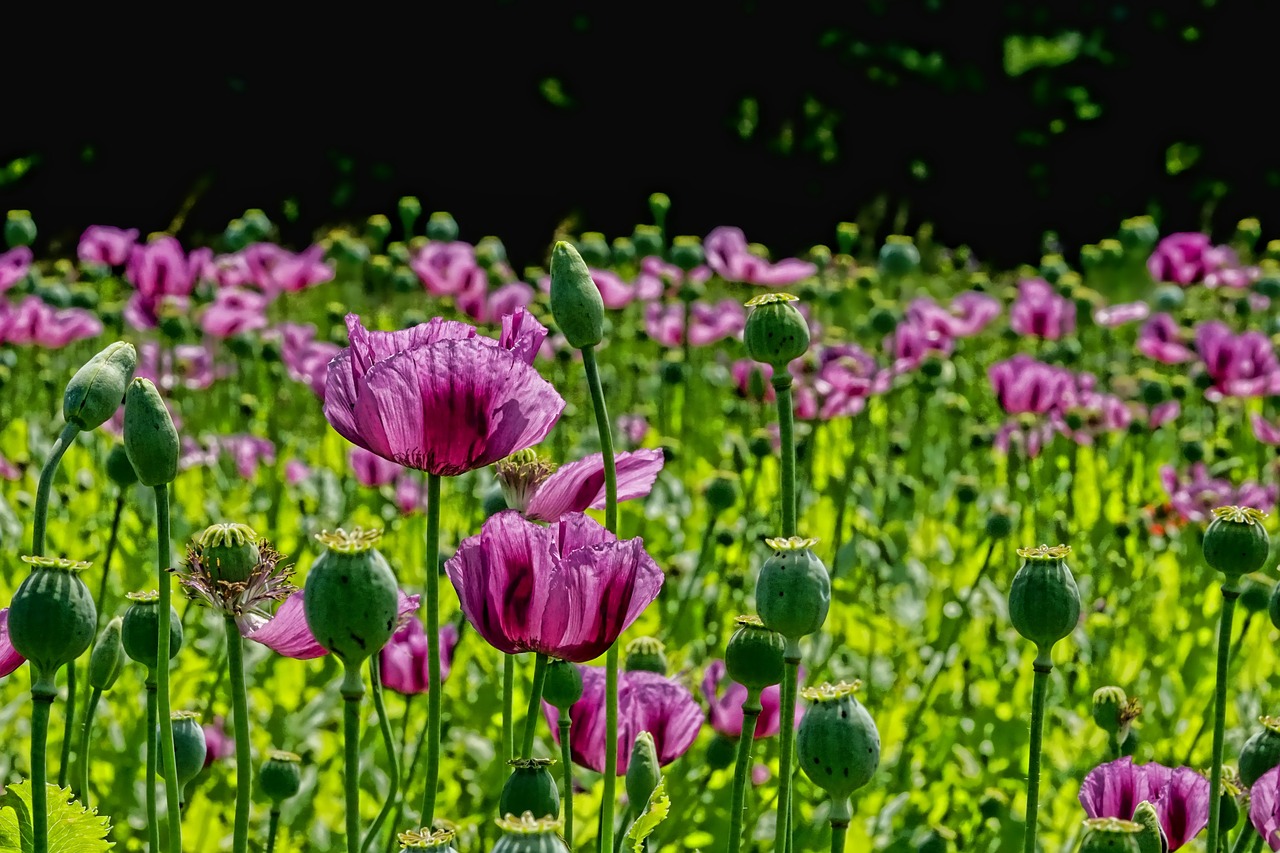
Types of Garden Mulch
When it comes to enhancing your garden, understanding the available to you is crucial. Mulch is not just a decorative layer; it's a powerful tool that can significantly affect the health and productivity of your plants. There are two primary categories of mulch: organic and inorganic. Each type comes with its unique set of characteristics, benefits, and drawbacks that can influence your gardening success.
Organic mulches are derived from natural materials and, as they break down, they enrich the soil with nutrients. This makes them an excellent choice for gardeners looking to improve soil health over time. Some popular organic mulch options include:
- Wood Chips: These not only suppress weeds but also retain moisture, making them ideal for flower beds and around trees.
- Straw: A fantastic option for vegetable gardens, straw helps to keep the soil temperature stable and adds organic matter as it decomposes.
- Grass Clippings: Easily accessible and often free, grass clippings can be used effectively to provide nutrients and suppress weeds.
On the other hand, inorganic mulches include materials like rubber, gravel, and landscape fabric. These options are typically more durable and require less maintenance than organic mulches. They are particularly useful in situations where long-lasting coverage is needed, such as in pathways or around perennial plants. However, they do not contribute nutrients to the soil over time. Here’s a quick overview of some inorganic mulches:
- Rubber Mulch: Made from recycled tires, this mulch is long-lasting and excellent for playgrounds or areas where durability is key.
- Gravel: Perfect for drainage and weed suppression, gravel is often used in rock gardens or as a decorative landscape element.
Choosing the right type of mulch depends on various factors, including the specific needs of your plants, your garden's climate, and your maintenance preferences. For instance, if you’re looking to nurture a vegetable garden, organic options like straw or grass clippings might be the best fit. However, if you want something low-maintenance for a decorative border, gravel could be your go-to choice.
In summary, understanding the different types of garden mulch allows you to make informed decisions that can lead to a more vibrant and healthy garden. Whether you opt for organic or inorganic, each type has its unique advantages that can cater to your specific gardening needs.
1. What is the main purpose of using mulch in a garden?
Mulch serves multiple purposes, including conserving soil moisture, suppressing weeds, regulating soil temperature, and adding nutrients as it decomposes.
2. How often should I replace my mulch?
Organic mulch typically needs to be replenished every year, while inorganic mulch can last several years with minimal maintenance.
3. Can I use colored mulch in my garden?
Yes, colored mulch can enhance the aesthetic appeal of your garden, but be cautious as some dyes may not be eco-friendly. Always choose products that are safe for plants.
4. Is it necessary to remove old mulch before adding new mulch?
It’s not always necessary, but removing old mulch can prevent the buildup of pests and diseases. If you choose to leave it, make sure it’s not too thick.
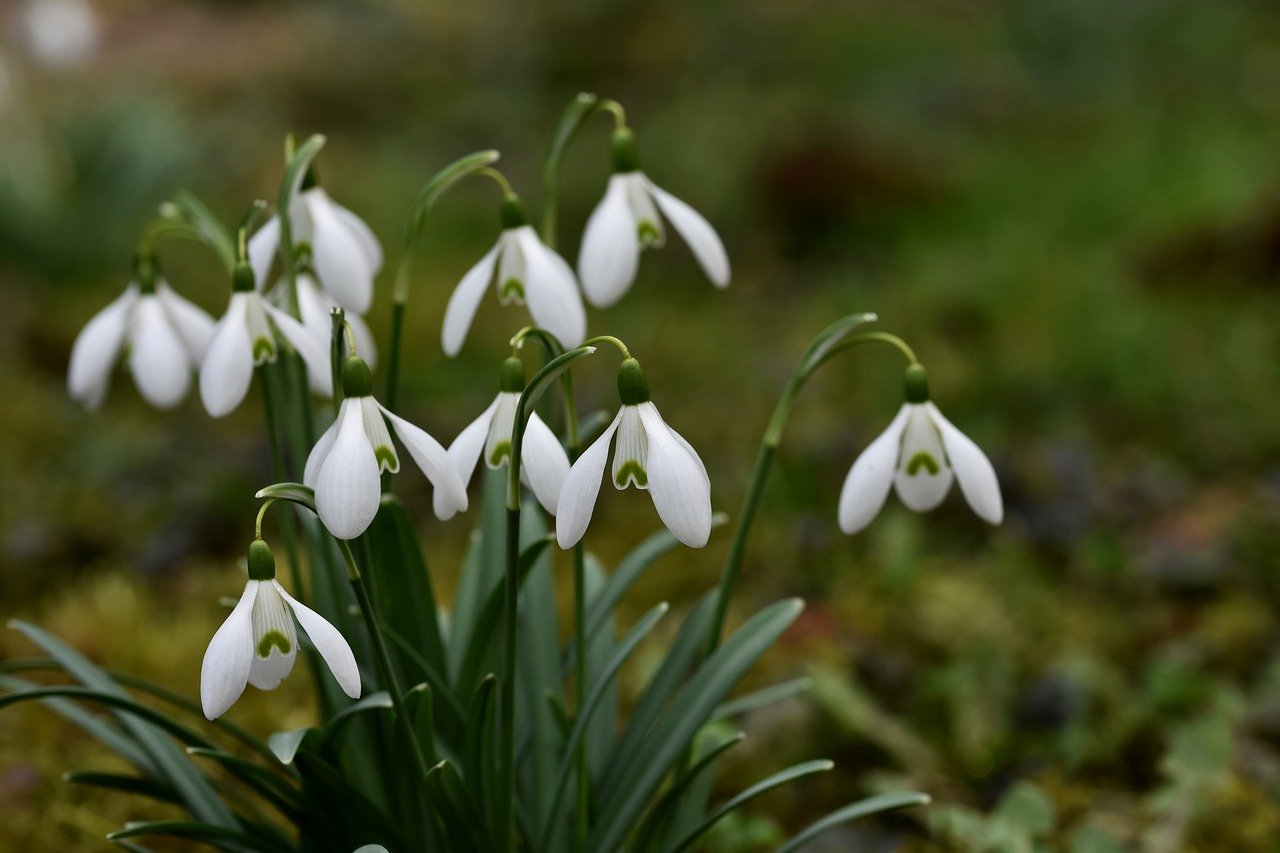
Organic Mulch Options
When it comes to enhancing the health of your garden, organic mulch options stand out as a natural and effective choice. These mulches not only suppress weeds and conserve moisture but also enrich the soil as they decompose, creating a thriving ecosystem for your plants. Popular organic mulch materials include wood chips, straw, and grass clippings. Each of these options brings unique benefits and can be used in various garden settings.
Wood chips are a favorite among gardeners for their ability to provide excellent weed suppression and moisture retention. They create a beautiful, rustic look while breaking down slowly, which means they won't need to be replaced as often as other types of mulch. When applying wood chips, it's essential to spread them in a layer that is about 2 to 4 inches thick, ensuring that they don’t touch the stems of your plants to prevent rot. This method not only keeps weeds at bay but also maintains a steady moisture level in the soil.
On the other hand, straw and grass clippings are incredibly cost-effective organic mulch options. Straw, often used in vegetable gardens, is lightweight and easy to apply, making it a popular choice for gardeners looking to cover large areas. Grass clippings, readily available from mowing your lawn, can be a fantastic addition to your garden, as they decompose quickly and add nitrogen to the soil. However, it's important to apply grass clippings in thin layers to avoid matting, which can create a barrier that prevents moisture from reaching the soil.
Here’s a quick comparison of these organic mulch options:
| Type of Organic Mulch | Benefits | Considerations |
|---|---|---|
| Wood Chips | Excellent weed suppression, moisture retention, long-lasting | Can be expensive, may attract pests if not managed |
| Straw | Lightweight, easy to apply, great for vegetable gardens | Can blow away in windy conditions, may harbor seeds |
| Grass Clippings | Rich in nitrogen, readily available, improves soil | Must be applied in thin layers to avoid matting |
In conclusion, choosing the right organic mulch can significantly impact your garden's health and appearance. By selecting materials that best fit your gardening style and the specific needs of your plants, you can create a vibrant and sustainable garden environment.
- What is the best organic mulch for vegetable gardens? Straw is often recommended due to its lightweight nature and ability to suppress weeds.
- How often should I replace my organic mulch? It depends on the type of mulch; wood chips can last longer, while straw may need to be replenished every season.
- Can I use colored wood chips in my garden? Yes, but ensure they are dyed with non-toxic materials to avoid harming your plants.
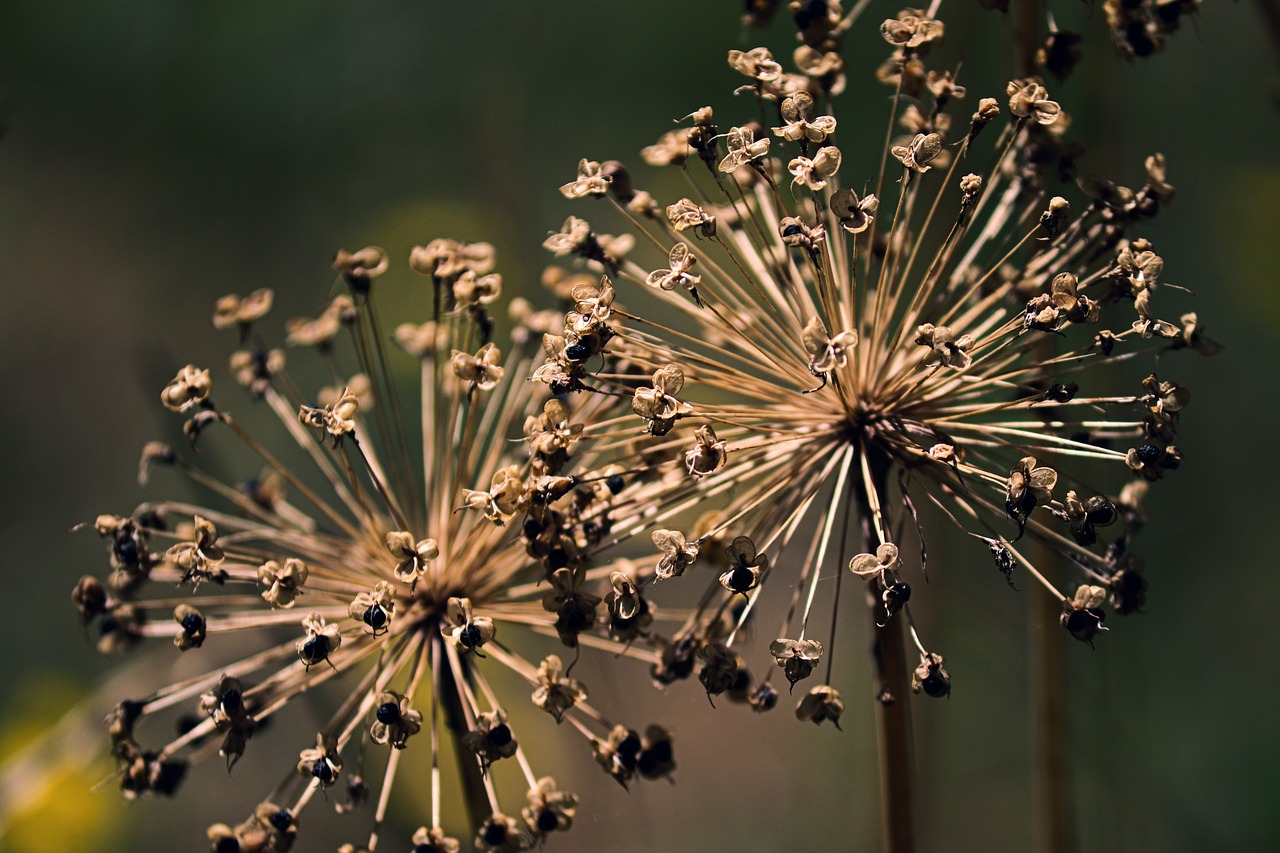
Wood Chips
are not just a pretty face in the garden; they're a powerhouse when it comes to mulching options. These little nuggets of nature provide a range of benefits that make them a favorite among gardeners. First and foremost, they excel at weed suppression. When spread over the soil, wood chips create a barrier that blocks sunlight, making it difficult for pesky weeds to thrive. Imagine them as a protective shield, guarding your precious plants from unwanted competition.
Wood chips also shine in the moisture retention department. They help keep the soil cool and damp, which is particularly crucial during those hot summer months. Think of them as a cozy blanket for your plants, ensuring they stay hydrated and healthy. As they decompose, wood chips gradually enrich the soil with nutrients, promoting a thriving ecosystem beneath the surface. It’s like giving your garden a slow-release vitamin boost!
Now, let’s talk application methods. When using wood chips, you want to aim for a layer that is about 2 to 4 inches thick. This depth is ideal for maximizing their benefits without suffocating your plants. Spread them evenly around the base of your plants, ensuring you leave a little space around the stems to prevent rot. Remember, moderation is key; too much mulch can lead to moisture buildup and root issues.
Here are a few best practices for using wood chips effectively:
- Source Quality Chips: Ensure you're using untreated wood chips to avoid harmful chemicals leaching into your soil.
- Layering: Mix wood chips with other organic materials like leaves or grass clippings for a balanced mulch blend.
- Replenish Regularly: As wood chips break down, they’ll need to be topped up to maintain their effectiveness.
In summary, wood chips are a fantastic choice for gardeners looking to enhance their garden's health and aesthetics. With their ability to suppress weeds, retain moisture, and enrich the soil, they truly are a gardener’s best friend. So, next time you're at the garden center, consider picking up a bag of wood chips and give your garden the love it deserves!
Q1: Can I use wood chips from my yard as mulch?
A1: Yes, you can! Just make sure they are from untreated wood and free of disease to protect your plants.
Q2: How often should I replace wood chips?
A2: It’s best to check your mulch layer every season. You may need to replenish it annually or biannually, depending on how quickly it decomposes.
Q3: Will wood chips attract pests?
A3: While wood chips can attract some pests, maintaining proper garden hygiene and avoiding excessive moisture can minimize this risk.
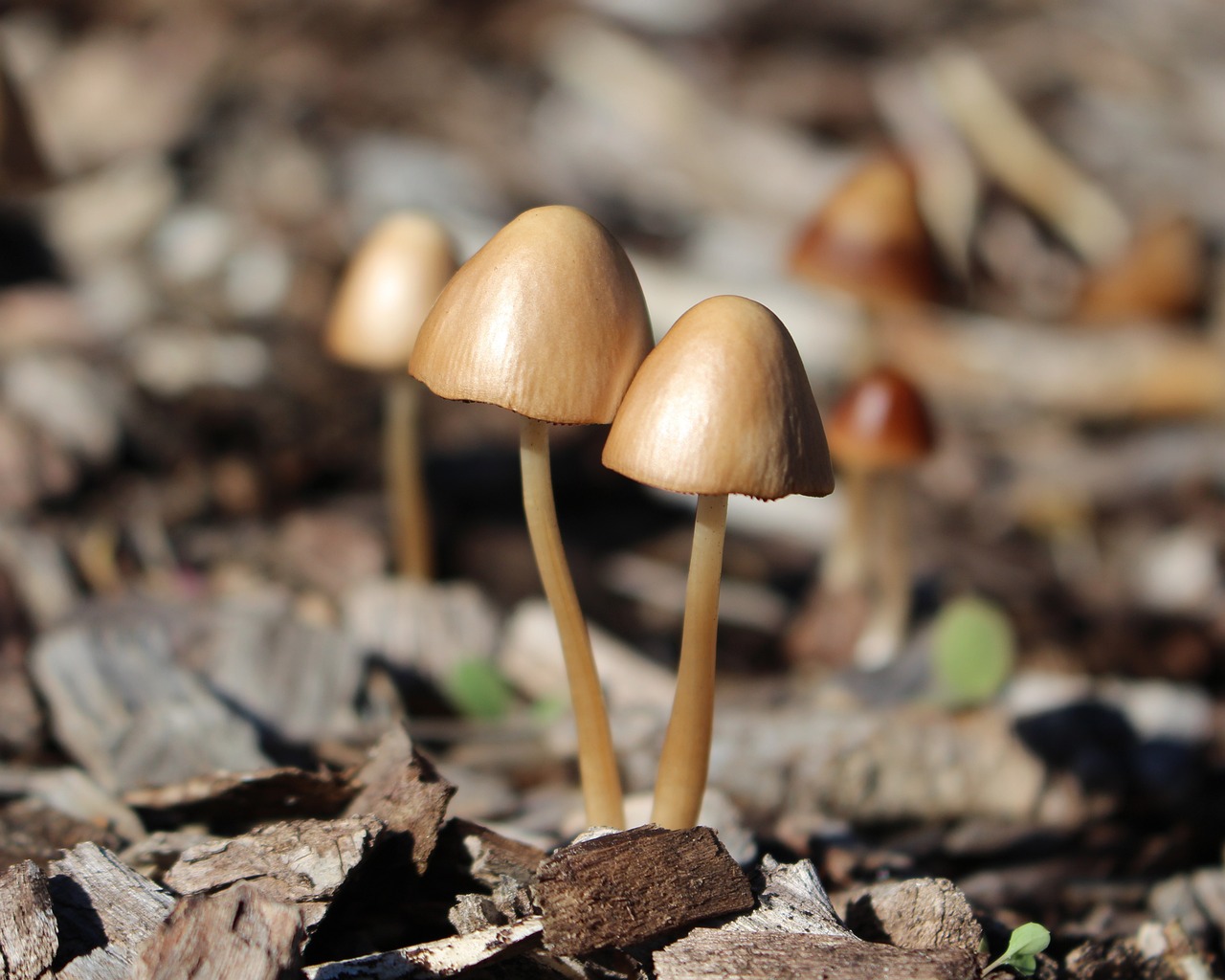
Straw and Grass Clippings
When it comes to organic mulch options, straw and grass clippings are two of the most popular choices among gardeners. Not only are they cost-effective, but they also provide a wealth of benefits that can significantly improve the health of your garden. Imagine transforming your garden into a lush oasis while also saving money—sounds great, right? These materials not only suppress weeds but also help retain moisture, regulate soil temperature, and improve soil structure as they decompose.
One of the key advantages of using straw is its ability to retain moisture in the soil. This is especially beneficial during hot summer months when plants can easily dry out. When applied in a thick layer, straw acts like a protective blanket, keeping the soil cool and moist. On the other hand, grass clippings, when used as mulch, are rich in nitrogen. As they break down, they release nutrients back into the soil, enriching it and promoting healthy plant growth. However, it's essential to ensure that the grass clippings are dry before application; wet clippings can mat down and create a barrier that prevents water from reaching the soil.
While both straw and grass clippings have their perks, they come with a few considerations. For instance, straw may contain seeds that could sprout unwanted plants in your garden. Therefore, it's wise to source straw from a reputable supplier who can guarantee that it is seed-free. Grass clippings, although beneficial, can sometimes lead to a nitrogen overload if applied too thickly, which may harm certain plants. To avoid these pitfalls, consider mixing straw and grass clippings with other organic materials, such as leaves or compost, to create a balanced mulch blend.
When applying straw and grass clippings, aim for a layer thickness of about 2 to 4 inches. This depth is sufficient to suppress weeds while still allowing moisture to penetrate. Remember to leave some space around the base of your plants to prevent rot. As the seasons change, you may need to replenish your mulch layer, particularly after heavy rains or as the materials break down. Regular checks will help you maintain an effective mulch layer that continues to support your garden's health throughout the growing season.
In summary, straw and grass clippings are not just economical choices for mulch; they also offer numerous benefits for your garden. By understanding their properties and applying them correctly, you can create a thriving garden environment that flourishes year after year. So, why not give these organic mulches a try? Your plants will thank you!
- Can I use fresh grass clippings as mulch? Fresh grass clippings can be used, but it's best to let them dry first to prevent matting and odor issues.
- How often should I replenish straw and grass clippings? It's advisable to check your mulch layer every few weeks and replenish it as needed, especially after heavy rain or wind.
- Will straw attract pests? Straw can attract certain pests, but proper management and mixing with other materials can help mitigate this risk.
- Can I use straw from my local farm? Yes, but ensure it's free from seeds and chemicals to avoid introducing unwanted plants into your garden.
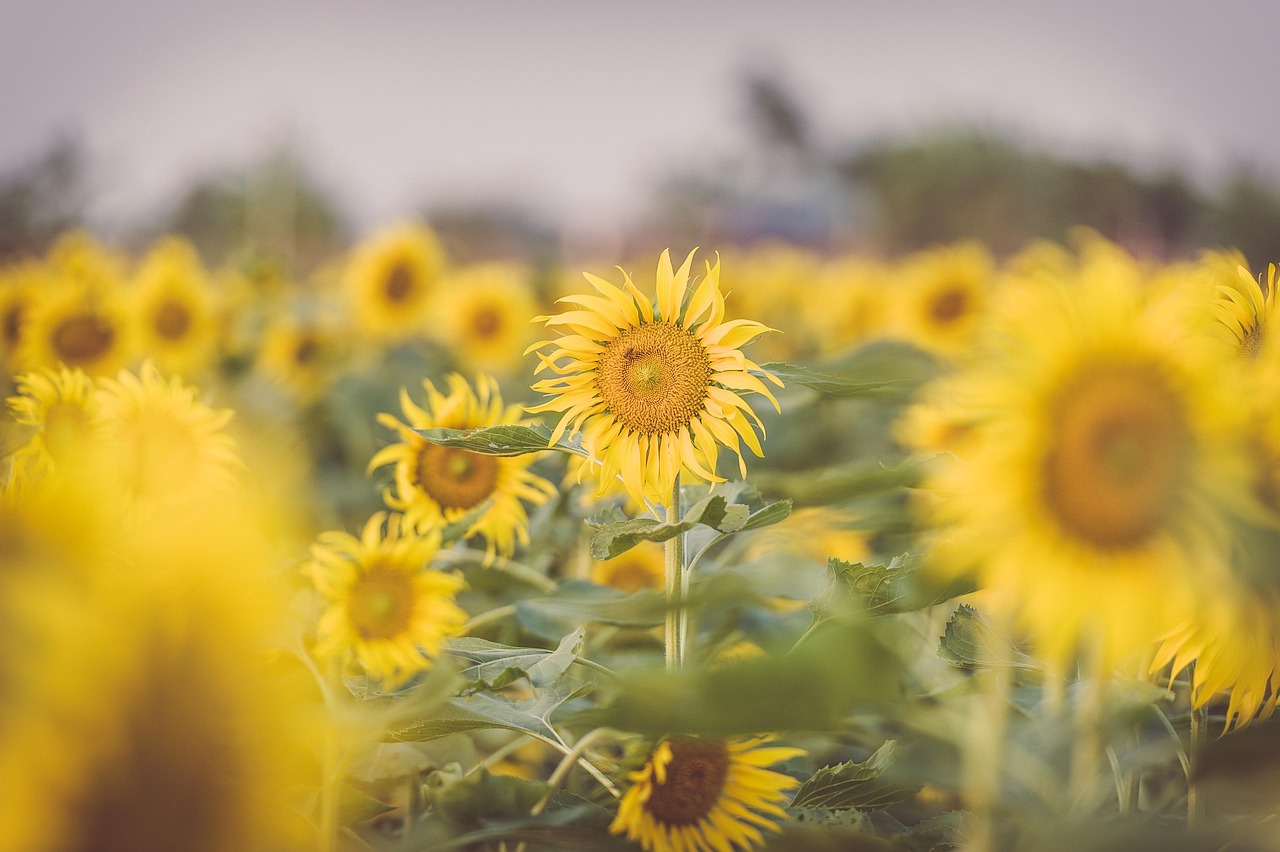
Inorganic Mulch Options
When it comes to garden mulch, inorganic options provide a unique set of benefits that can complement your gardening strategy. Unlike organic mulches, which decompose and enrich the soil, inorganic mulches are typically made from materials that do not break down, offering long-lasting solutions for garden maintenance. Common inorganic mulches include rubber, gravel, and landscape fabric, each serving distinct purposes and catering to different gardening needs.
One of the most popular inorganic mulches is rubber mulch, which is often made from recycled tires. This type of mulch is incredibly durable and can last for many years without needing replacement. It effectively suppresses weeds and retains moisture, making it a practical choice for areas where you want minimal maintenance. However, it’s important to note that rubber mulch can retain heat, which may not be ideal for all plants, especially those that prefer cooler soil temperatures.
Another excellent option is gravel mulch. It is especially suitable for xeriscaping or dry gardens, as it allows water to permeate while also preventing evaporation. Gravel is available in various sizes and colors, enabling you to customize the aesthetic of your garden. However, it’s crucial to consider that gravel can heat up quickly in the sun, which might affect nearby plants. Moreover, it doesn’t provide any nutrients to the soil, so it should be used in conjunction with other soil amendments.
For those looking for a more structured approach, landscape fabric can be a game-changer. This material acts as a barrier that prevents weeds from growing while allowing water and nutrients to reach the soil. It's often used in conjunction with other types of mulch, both organic and inorganic, to create a comprehensive gardening solution. However, care must be taken when installing landscape fabric, as improper installation can lead to water pooling and inadequate drainage.
Here’s a quick comparison table to summarize the key characteristics of these inorganic mulch options:
| Mulch Type | Benefits | Drawbacks |
|---|---|---|
| Rubber Mulch | Durable, weed suppression, moisture retention | Can retain heat, no nutrient contribution |
| Gravel Mulch | Water permeable, aesthetic variety, low maintenance | Heats quickly, no nutrient contribution |
| Landscape Fabric | Weed barrier, allows water and nutrients through | Improper installation can lead to drainage issues |
In summary, inorganic mulches can serve as effective solutions for specific gardening challenges. While they may not enrich the soil like their organic counterparts, they offer durability and low maintenance, making them suitable for various gardening scenarios. Whether you're looking to suppress weeds, retain moisture, or simply enhance the aesthetic appeal of your garden, incorporating inorganic mulch options might just be the right choice for you.
- What is the best type of mulch for my garden? The best type of mulch depends on your garden's specific needs. Organic mulches are great for enriching the soil, while inorganic mulches are durable and low-maintenance.
- How often should I replace my inorganic mulch? Inorganic mulches like rubber and gravel can last for several years, but you should check for compaction and weed growth regularly.
- Can I use both organic and inorganic mulches together? Absolutely! Many gardeners find that using a combination of both can provide the benefits of each type while minimizing their individual drawbacks.
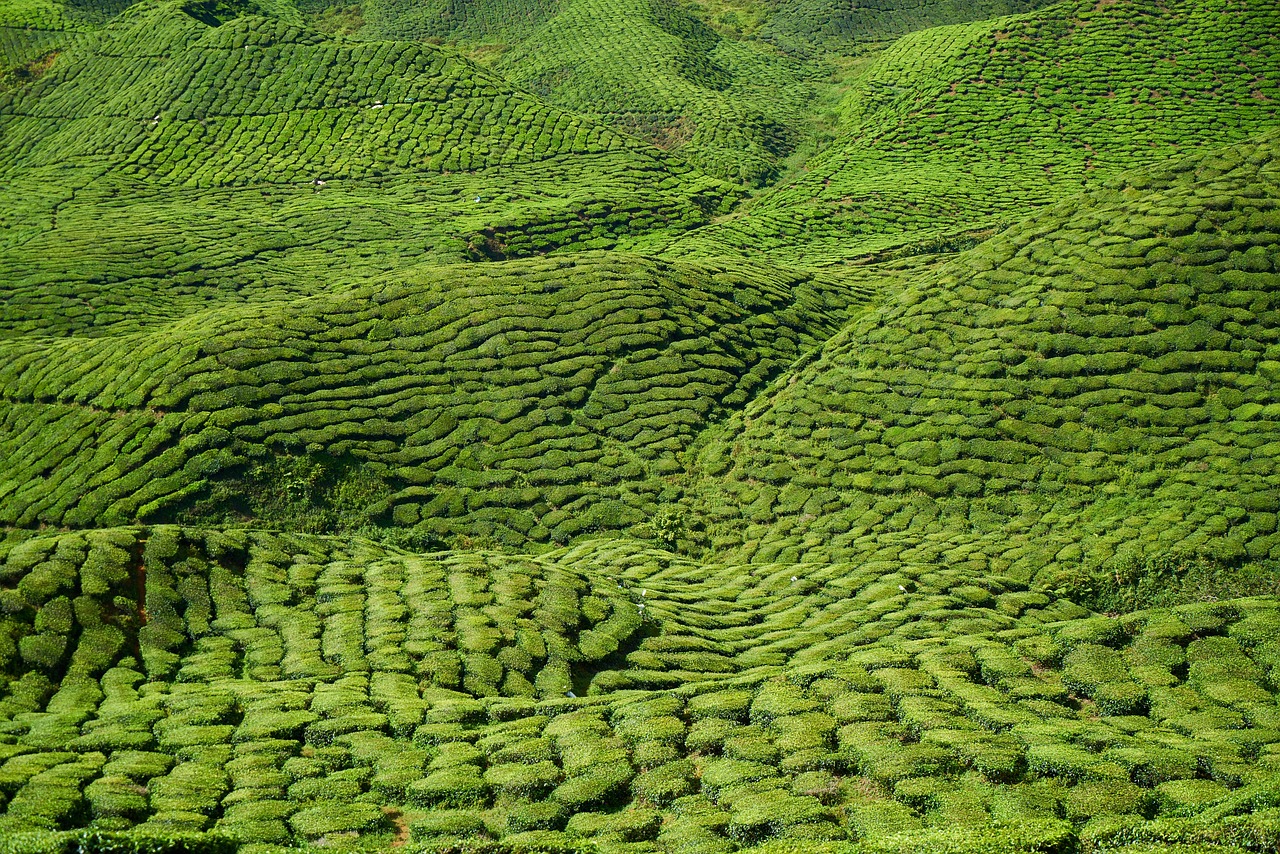
Preparing Your Mulch
Proper preparation of mulch is essential for maximizing its benefits in your garden. Think of mulch as a cozy blanket for your plants, helping to keep them warm, hydrated, and protected from the harsh elements. But before you throw down that layer of goodness, you need to ensure you're setting the stage for success. First, consider the type of mulch you want to use. Are you leaning towards organic options like wood chips or straw, or are you more inclined to go with inorganic choices like gravel? Each type has its unique benefits, and choosing the right one can make all the difference.
Once you've selected your mulch, the next step is to prepare the soil. This is akin to preparing a canvas before painting. You wouldn't want to start on a dirty or uneven surface, right? Start by testing your soil to understand its pH and nutrient levels. You can purchase a soil testing kit or send a sample to a local extension service. Based on the results, you might need to amend your soil with compost or other organic matter to enhance its fertility. This will create a healthy foundation for your mulch, allowing it to perform at its best.
Now, let’s talk about the actual application of your mulch. It’s not just about dumping it on the ground; there’s a technique to it. You want to spread the mulch evenly around your plants, ensuring that it’s not piled up against the stems or trunks. This can lead to rot and other issues. Aim for a layer thickness of about 2 to 4 inches, depending on the type of mulch and the plants you’re using it for. Too little won't provide the benefits you’re after, while too much can suffocate your plants.
Lastly, keep in mind that mulch isn't a one-and-done deal. Just like you would maintain a garden, your mulch layer requires some attention, too. Over time, organic mulches will break down and need to be replenished, while inorganic options might require occasional cleaning to keep them looking fresh. Regular checks will help you spot any issues early on, ensuring that your garden remains healthy and vibrant throughout the growing season.
- How often should I replace my mulch? Organic mulches typically need to be replenished every year or two, depending on how quickly they decompose.
- Can I use colored mulch? Yes, colored mulch can be used, but make sure it’s made from safe materials. Some dyes may not be suitable for gardens.
- Is mulch necessary for all plants? While not all plants require mulch, most can benefit from it, especially in terms of moisture retention and weed suppression.

Choosing the Right Mulch
When it comes to for your garden, the options can feel overwhelming. With so many types available, how do you make the best choice? Well, it all starts with understanding your garden's unique needs. You need to consider factors like the type of plants you're growing, the climate in your area, and the specific conditions of your garden. Think of it like dressing for the weather; just as you wouldn't wear a heavy coat in summer, you shouldn't choose a mulch that doesn't suit your garden's environment.
First and foremost, let's talk about the plants. Different plants have different requirements. For instance, if you have a vegetable garden, you might want to opt for organic mulches like straw or wood chips, which not only suppress weeds but also enrich the soil as they break down. On the other hand, if you’re landscaping around trees or shrubs, inorganic options like rubber mulch could be a better fit due to their durability and low maintenance.
Next, consider your local climate. In hotter regions, mulch can help retain moisture and keep the soil temperature stable, which is crucial for plant health. In contrast, if you're in a cooler area, you might want to avoid heavy mulches that can keep the ground too cold. Additionally, think about your garden's drainage. Some mulches, like gravel, allow for excellent drainage, making them ideal for areas prone to waterlogging, while others might retain too much moisture.
Another important aspect is the aesthetic appeal. Mulch can enhance the visual appeal of your garden, so choose a color and texture that complements your landscape. For example, dark wood chips can provide a striking contrast against vibrant flowers, while lighter mulches may blend in more naturally with the surroundings. Remember, your garden is not just a place for plants; it's a space for you to enjoy, so make sure it looks good!
To help you make a more informed decision, here’s a quick comparison of some common mulch types:
| Mulch Type | Benefits | Best Uses |
|---|---|---|
| Wood Chips | Excellent weed suppression, moisture retention | Flower beds, vegetable gardens |
| Straw | Cost-effective, improves soil quality | Vegetable gardens, around shrubs |
| Rubber | Durable, low maintenance | Pathways, around trees |
| Gravel | Good drainage, long-lasting | Rock gardens, driveways |
Ultimately, the right mulch is one that meets the needs of your plants while also fitting your gardening style and maintenance preferences. Take your time to evaluate your options, and don’t hesitate to mix and match different types if that suits your garden better. After all, gardening is all about experimenting and finding what works best for you!
- What is the best mulch for vegetable gardens? Organic mulches like straw or wood chips are recommended as they improve soil quality.
- How often should I replace my mulch? It's advisable to replenish organic mulch every year, while inorganic mulch can last longer but should be checked regularly.
- Can I use grass clippings as mulch? Yes, grass clippings are a great organic mulch option, but ensure they are dry to prevent matting.

Preparing the Soil
When it comes to gardening, the foundation is everything, and that foundation is the soil. Preparing your soil before applying mulch is a crucial step that can significantly enhance the benefits of your mulch layer. Think of your garden soil as a sponge; if it’s compacted or depleted of nutrients, it won’t hold water or support plant life effectively. So, what should you do to ensure your soil is ready for that luscious layer of mulch? Let’s dive in!
First and foremost, soil testing is essential. This process involves checking the pH levels and nutrient content of your soil. You can either use a DIY soil test kit or send a sample to a local agricultural extension office. Knowing the composition of your soil will help you understand what amendments are necessary. For instance, if your soil is too acidic, you might need to add lime. Conversely, if it’s too alkaline, adding sulfur can help balance it out. Here’s a simple table to illustrate common soil amendments:
| Soil Issue | Recommended Amendment |
|---|---|
| Low pH (Acidic) | Lime |
| High pH (Alkaline) | Sulfur |
| Nutrient Deficiency | Compost or Fertilizer |
Once you have a clear understanding of your soil’s needs, it’s time to amend the soil. This might involve mixing in organic matter like compost, which not only enriches the soil with nutrients but also improves its structure. A well-structured soil allows for better drainage and root penetration, making it easier for your plants to thrive. Aim for a mix of about 25% organic matter to your existing soil to create a nutrient-rich environment.
Next, you’ll want to focus on tilling the soil. Tilling helps to aerate the soil, breaking up compacted areas and allowing roots to grow more freely. However, be cautious not to over-till, as this can disrupt beneficial microorganisms that contribute to soil health. A gentle tilling to a depth of about 6-8 inches is usually sufficient. If you’re dealing with a raised bed or a small garden, hand tools like a garden fork can be just as effective.
Finally, after you’ve amended and tilled the soil, it's essential to level the surface. This practice not only makes your garden look tidy but also ensures that water will distribute evenly when it rains or when you water your plants. Uneven surfaces can lead to pooling water, which can cause root rot and other issues. Use a rake to smooth out the soil, creating a flat surface that’s ready for your mulch application.
By following these steps—testing, amending, tilling, and leveling—you’ll create a healthy foundation for your mulch. This preparation ensures that your mulch can do its job effectively, conserving moisture, suppressing weeds, and enriching the soil as it breaks down. So, are you ready to give your garden the best start possible? Your plants will thank you for the extra effort!
- How often should I test my soil? It's advisable to test your soil every 2-3 years, or whenever you notice changes in plant health.
- Can I use mulch without preparing the soil? While you can apply mulch directly, preparing the soil enhances the overall effectiveness of the mulch and supports plant growth.
- What if I have clay soil? If you have clay soil, adding organic matter like compost can help improve its texture and drainage.

Applying Garden Mulch
Applying garden mulch might seem like a simple task, but it’s an art that can significantly enhance your garden's health and aesthetics. Think of mulch as a protective blanket for your plants; it shields them from the harshness of the elements while providing a range of benefits. To get the most out of your mulch, you need to pay attention to a few key factors. First and foremost, the application technique can make or break your mulch's effectiveness. Are you ready to dive into the world of mulch application? Let’s explore!
One of the first things to consider when applying mulch is the layer thickness. Too little mulch won't provide the necessary protection against weeds and moisture loss, while too much can suffocate your plants and lead to fungal problems. Ideally, a mulch layer should be between 2 to 4 inches thick, depending on the type of mulch and the specific plants you are working with. For instance, heavier materials like wood chips may require a slightly thinner layer, while lighter materials like straw can be applied more generously. A good rule of thumb is to start with 3 inches and adjust based on your garden's needs.
Another important aspect of mulch application is ensuring that it is spread evenly across the garden bed. Uneven mulch can lead to dry patches and areas where weeds thrive. To achieve an even distribution, you can use a rake or your hands, but be careful not to pile mulch against the stems or trunks of your plants, as this can promote rot. Instead, leave a small gap—about an inch or so—around the base of each plant to allow for air circulation and moisture retention.
Now, let’s talk about mulch maintenance. Just like any other aspect of gardening, mulch requires a bit of care. Over time, organic mulch will decompose, which is great for enriching your soil but may necessitate replenishing the layer. Regularly check your mulch layer, especially after heavy rain or wind, as these conditions can shift or wash away mulch. If you notice that the layer has thinned out, it’s time to add more to maintain that protective barrier. You can also refresh your mulch by turning it over gently with a garden fork to aerate it and break down any compacted areas.
Lastly, it’s essential to monitor how your mulch is interacting with the surrounding environment. For example, if you notice that your garden is retaining too much moisture, you may need to reduce the thickness of your mulch layer or opt for a more porous type. Conversely, if you find that weeds are still popping up, consider adding a layer of landscape fabric beneath your mulch to further suppress weed growth. Always keep an eye on your plants and adjust your mulch strategy accordingly. Remember, gardening is all about observation and adaptation!
- How often should I replace my mulch? Organic mulch typically needs to be replenished every 6 to 12 months, depending on the material and environmental conditions.
- Can I use mulch in vegetable gardens? Absolutely! Mulch can be particularly beneficial in vegetable gardens, helping to retain moisture and suppress weeds.
- Is there a best time to apply mulch? The best time to apply mulch is in the spring after the soil has warmed up, but it can also be applied in the fall to protect plants during winter.
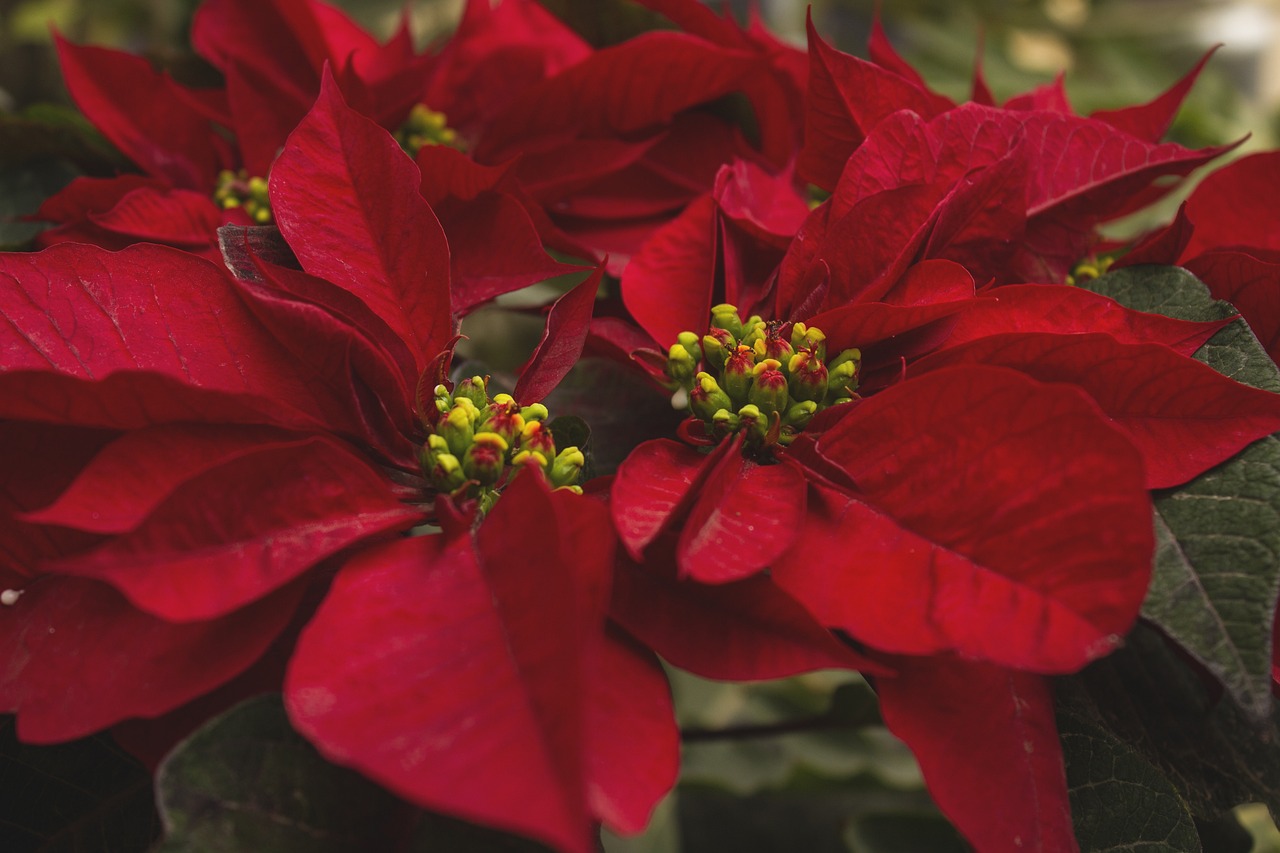
Layer Thickness
When it comes to applying garden mulch, is a crucial factor that can significantly influence the overall health of your plants. Think of mulch as a cozy blanket for your garden; just like you wouldn’t want it too thin or too thick, the same applies here. The ideal thickness generally ranges from 2 to 4 inches, depending on your specific garden needs and the type of mulch you’re using. But why is this thickness so important?
Applying mulch too thinly can lead to several issues. For instance, a thin layer might not effectively suppress weeds, allowing them to invade your garden and compete for nutrients and moisture. On the other hand, if you apply mulch too thickly, it can suffocate your plants, prevent water from reaching the soil, and create an environment conducive to pests and diseases. So, achieving that sweet spot is essential.
To determine the right thickness for your mulch layer, consider the following factors:
- Plant Type: Different plants have varying needs. For example, shrubs and perennials may benefit from a thicker layer, while annuals might do better with a thinner application.
- Environmental Conditions: In hotter climates, a thicker layer can help retain soil moisture, while in cooler areas, a thinner layer might allow the soil to warm up more quickly in spring.
- Mulch Material: Organic mulches, such as wood chips, can settle over time, so starting with a thicker layer might be wise. In contrast, inorganic mulches like gravel don’t decompose, so they can be applied more sparingly.
To help you visualize the ideal thickness for different mulch types, here’s a quick reference table:
| Mulch Type | Recommended Thickness |
|---|---|
| Wood Chips | 3-4 inches |
| Straw | 2-3 inches |
| Grass Clippings | 1-2 inches |
| Rubber Mulch | 2-3 inches |
| Gravel | 2 inches |
Once you’ve determined the right thickness, it’s essential to apply the mulch evenly around your plants, ensuring that it doesn’t touch the stems or trunks. This practice will help prevent rot and promote healthy growth. Also, remember to check your mulch periodically; as it decomposes or settles, you may need to add more to maintain that perfect layer thickness.
In summary, finding the right layer thickness for your mulch can make all the difference in creating a thriving garden. By considering plant types, environmental conditions, and mulch materials, you can ensure that your garden remains healthy, vibrant, and weed-free all season long.
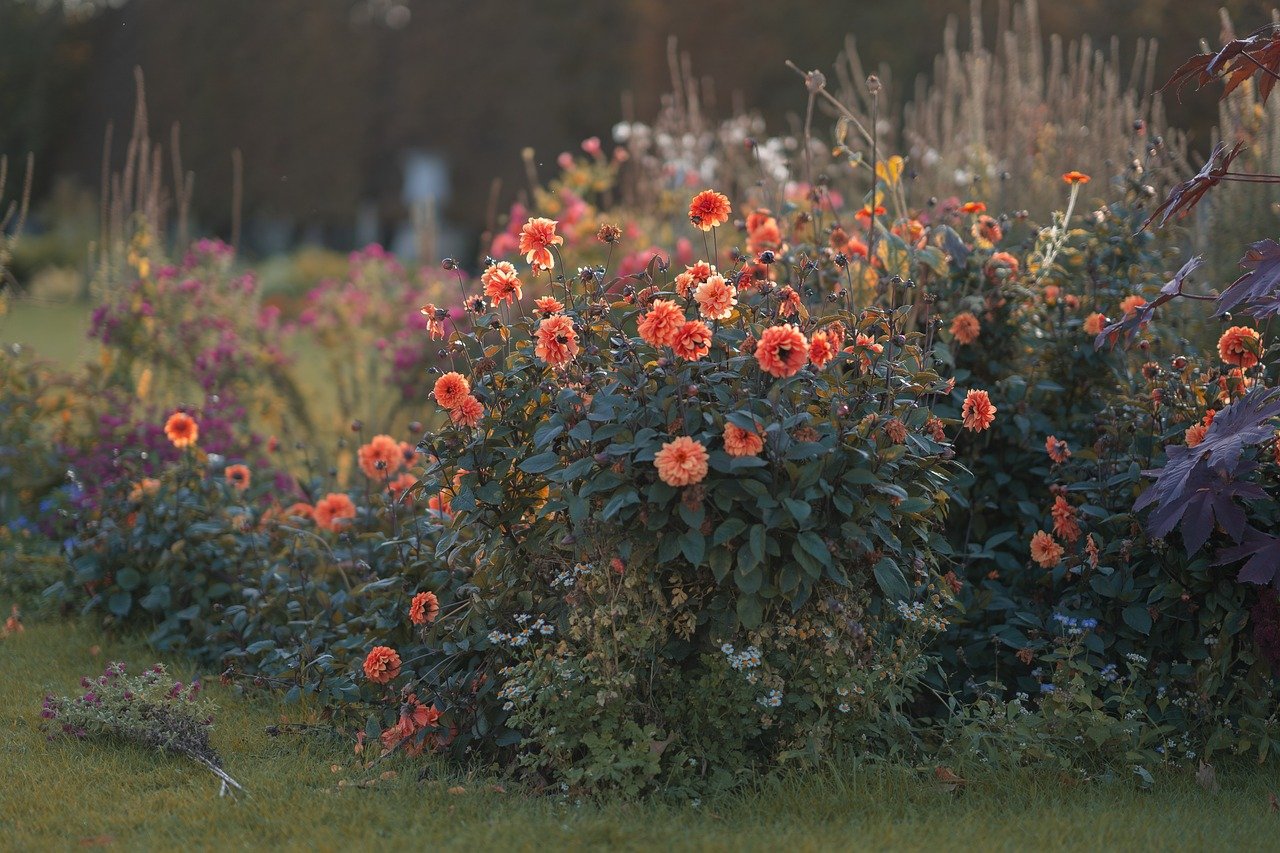
Mulch Maintenance
Maintaining your mulch layer is crucial for ensuring that it continues to provide all the amazing benefits your garden deserves. Just like a well-tended garden, mulch needs a little love and attention to keep it performing at its best. Regular maintenance not only helps in preserving the aesthetic appeal of your garden but also enhances soil health, suppresses weeds, and retains moisture. So, how do you go about keeping your mulch in tip-top shape? Let’s dive into some essential maintenance tips!
First off, it’s important to periodically check the mulch layer. Over time, mulch can break down, compact, or wash away due to rain or watering. A good rule of thumb is to inspect your mulch every few weeks during the growing season. If you notice that it’s thinning out or has become uneven, it might be time to replenish it. Aim to maintain a thickness of about 2 to 4 inches, depending on the type of mulch and the plants you’re growing. Too little mulch won’t provide adequate moisture retention or weed suppression, while too much can suffocate plant roots.
Another key aspect of mulch maintenance is removing debris. Leaves, twigs, and other organic matter can accumulate on top of your mulch, creating an environment conducive to pests and diseases. Regularly raking away this debris helps keep your mulch clean and allows it to do its job more effectively. Plus, it keeps your garden looking neat and tidy! If you find that your mulch has started to decompose significantly, consider mixing it into the soil to enrich it further. This not only helps in recycling nutrients but also improves soil structure.
When it comes to replenishing mulch, timing is everything. Ideally, you should add a fresh layer of mulch in early spring, just before the growing season begins. This gives your plants a head start by keeping the soil temperature stable and moisture levels high. However, if you notice that your mulch has thinned out during the summer, don’t hesitate to add more. Just be careful not to smother your plants; keep the mulch a few inches away from their stems to prevent rot.
Lastly, it’s essential to monitor for pests and diseases. While mulch is fantastic for your garden, it can also attract unwanted critters. Keep an eye out for signs of infestation, such as holes in leaves or unusual droppings. If you suspect that pests are taking up residence in your mulch, consider switching to a different type or treating the area with organic pest control solutions. By being vigilant, you can maintain a healthy balance in your garden ecosystem.
In summary, mulch maintenance is not just about keeping your garden looking good; it's about creating a thriving environment for your plants. By regularly checking your mulch layer, removing debris, replenishing as needed, and monitoring for pests, you can ensure that your garden flourishes. Remember, a little effort goes a long way in maintaining the health and appearance of your beloved garden!
- How often should I replace my mulch? It's recommended to replenish mulch every 6 to 12 months, depending on the type and weather conditions.
- Can I use old mulch in my compost? Yes, old organic mulch can be added to your compost pile as it breaks down and enriches the compost.
- Is mulch safe for all plants? Most plants benefit from mulch, but be cautious with sensitive plants; always keep mulch a few inches away from their stems.
- What type of mulch is best for vegetable gardens? Organic mulches like straw or grass clippings are excellent choices for vegetable gardens as they improve soil quality.
Frequently Asked Questions
- What is garden mulch and why is it important?
Garden mulch is a protective layer placed on the soil surface that serves multiple purposes, such as conserving moisture, suppressing weeds, and enhancing soil health. It's like a cozy blanket for your plants, helping them thrive by keeping the soil temperature stable and reducing evaporation.
- What are the different types of garden mulch?
There are two main categories of garden mulch: organic and inorganic. Organic mulches include materials like wood chips, straw, and grass clippings, which enrich the soil as they decompose. Inorganic options, such as rubber and gravel, provide durability and require less maintenance. Choosing the right type depends on your garden's specific needs and aesthetic preferences.
- How do I choose the right mulch for my garden?
When selecting mulch, consider factors like the types of plants you have, the climate in your area, and the specific conditions of your garden. For example, if you’re growing vegetables, organic mulches that improve soil fertility may be best. On the other hand, if you want a low-maintenance option, inorganic mulches could be the way to go.
- How do I prepare the soil before applying mulch?
Preparing the soil is crucial for mulch effectiveness. Start by testing your soil to understand its pH and nutrient levels. You may need to amend it with compost or fertilizers to create a healthy foundation. Once the soil is ready, clear any weeds or debris before applying your mulch for the best results.
- What is the ideal thickness for a mulch layer?
The ideal thickness for mulch typically ranges from 2 to 4 inches, depending on the type of mulch and the plants involved. Thicker layers can help with moisture retention and weed suppression, but be careful not to smother your plants. Always adjust the thickness based on specific plant needs and environmental conditions.
- How often should I replenish my mulch?
Mulch should be replenished as needed, usually once or twice a year, depending on the type used and environmental factors. Organic mulches decompose over time and will need more frequent replenishment. Keep an eye on the mulch layer and add more when it starts to thin out to ensure your garden continues to reap the benefits.
- Can I use grass clippings as mulch?
Yes, grass clippings can be an excellent organic mulch option! They are readily available and provide nutrients as they decompose. However, be sure to let them dry out a bit before applying to prevent matting, which can block water and air from reaching the soil.
- Are there any downsides to using wood chips as mulch?
While wood chips are fantastic for moisture retention and weed suppression, they can sometimes tie up nitrogen in the soil as they decompose. To counteract this, you can add a nitrogen-rich fertilizer when you apply wood chips or mix them with other organic materials.



















